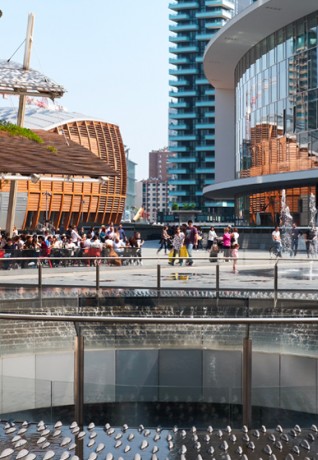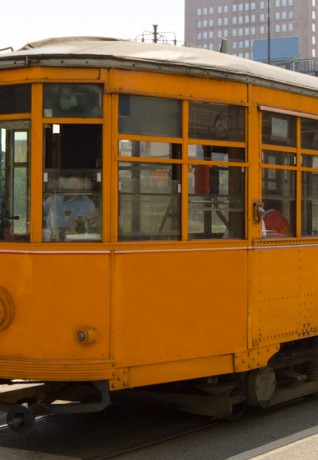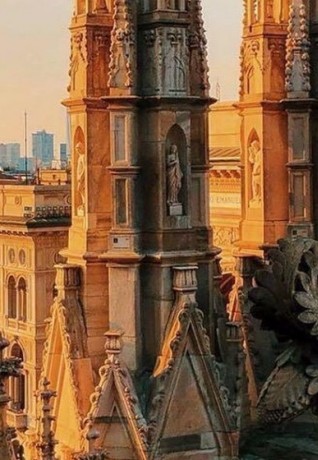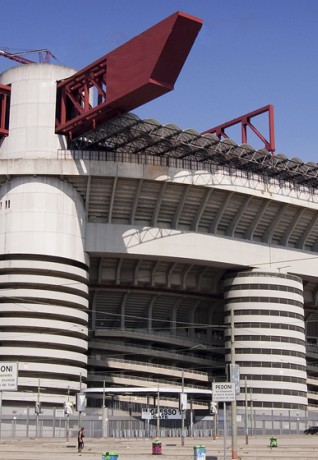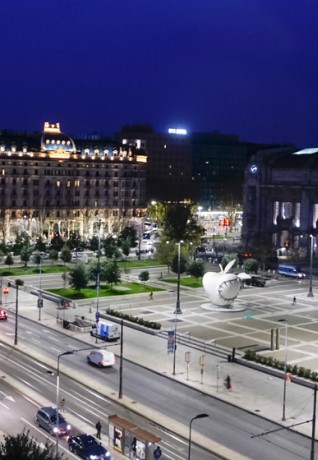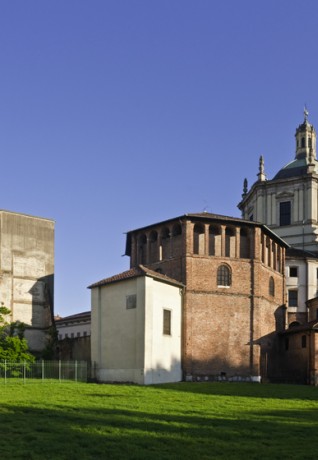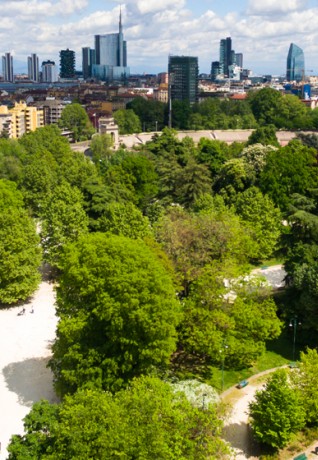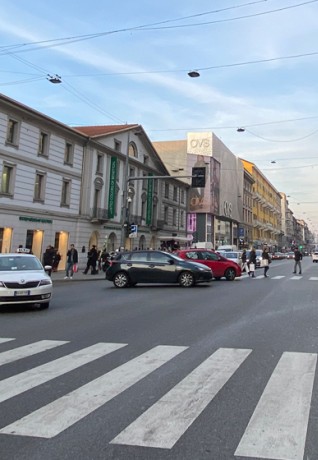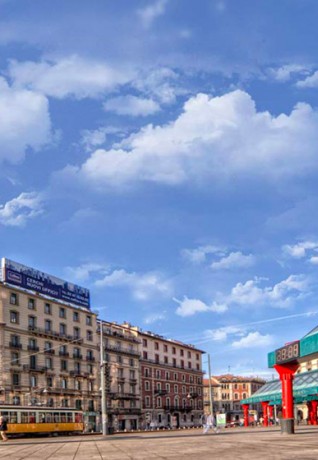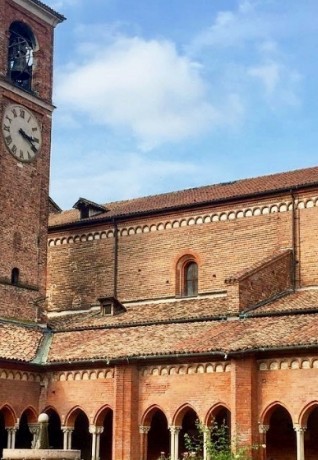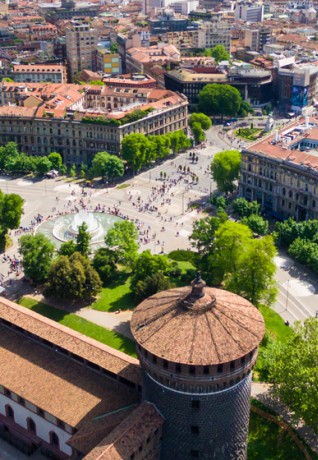Accessible itinerary: museums and gardens
From Porta Venezia to Piazza Duomo
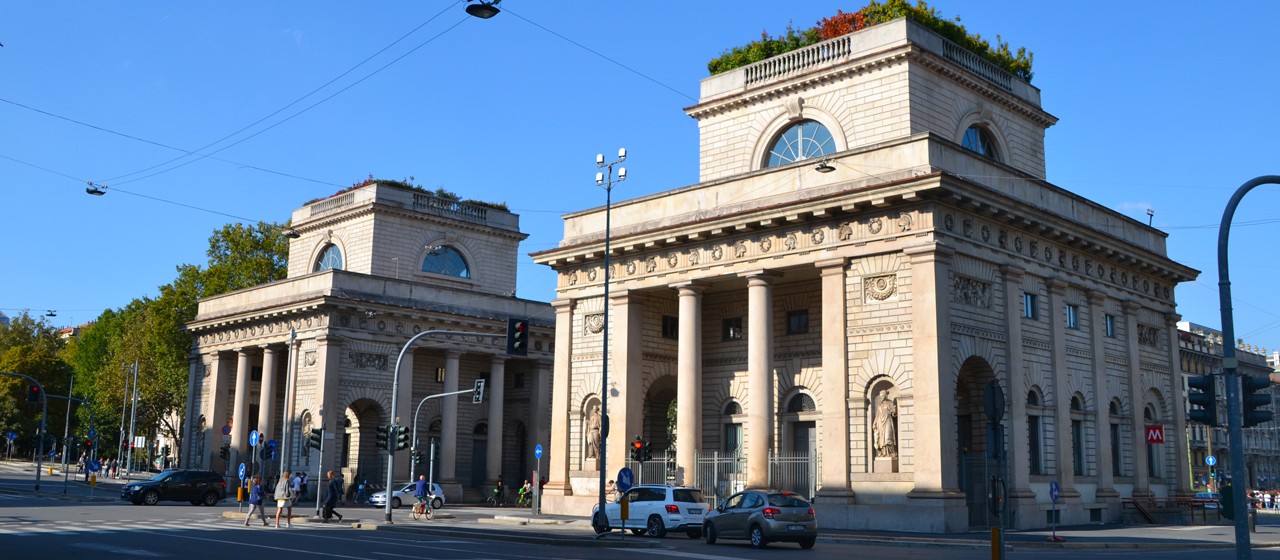
This itinerary starts from piazza Oberdan, where the gates of Porta Venezia stand.
How to get there
Piazza Oberdan can be reached by public transport: tram 9; underground: M1 (Porta Venezia stop).
For information on accessibility for passengers with disabilities, please visit the ATM web site.
It is also possible to use the trains of the Passante Ferroviario (Porta Venezia stop).
For more information for passengers with disabilities, please visit the Trenord website.
If you reach the area by car, it is possible to park along Bastioni di Porta Venezia and Corso Venezia (Area C) on the blue stripes. There is a parking space for disabled pass holders at 4, Corso Buenos Aires.
This itinerary starts from piazza Oberdan, where the gates of Porta Venezia stand, also called Porta Orientale until 1860 and Porta Riconoscenza in the Napoleonic era. It is one of the six main gates of Milano, characterized by the presence of Vantini's neoclassical customs offices.
From the side of the square that overlooks Corso Buenos Aires, cross the pedestrian crossing in the direction of the Bastioni (there is a 4-meter stretch of very uneven asphalt with tram rails) pass through the two Bastioni and walk along Corso Venezia, formerly named "Corso di Porta Orientale", which connected the city centre with the homonymous gate.
After 200 meters, at number 57, you reach the entrance to the Civico Planetario Hoepli. The building was inaugurated in 1930 on a project by architect Piero Portaluppi and commissioned by the Swiss publisher Ulrico Hoepli, who donated it to the city.
The planetarium is located inside the Indro Montanelli Public Gardens (commonly called Giardini di Porta Venezia) , the first Milanese public park that was opened in 1786 on a project by architect Giuseppe Piermarini.
In addition to the Planetarium, the park includes other significant buildings such as Palazzo Dugnani and the Museo Civico di Storia Naturale (Museum of Natural History). Founded in 1838, the museum is one of the most important museums of natural history in Europe. The building was almost destroyed in 1943 by bombing during the Second World War. Rebuilt after the war, it reopened to the public in 1952.
To reach the museum, enter the park for about 50 m on a gravel path. Continuing the path inside the park, keeping the fence of the Giardini Pubblici on your left, you reach the park exit at the intersection of via Palestro and Corso Venezia. Just before the exit, on the right, there is a public accessible toilet.
Take via Palestro on the right sidewalk, walk along the gate of the Giardini Pubblici and shortly after the monument dedicated to Giuseppe Dezza, which you will see on the other side of the road, cross via Palestro (asphalt with uneven paving with tram rails) and on your right you see the Galleria d’Arte Moderna (GAM).
The Galleria di Arte moderna is hosted inside the magnificent Villa Reale, one of the masterpieces of Milanese Neoclassicism, built between 1790 and 1796 as the residence of Count Lodovico Barbiano di Belgiojoso.
In 1921 it became the venue of the Milanese collections of Modern Art, the gallery now accommodates valuable collections (the Grassi collection is noteworthy) and is internationally famous.
Adjacent to the GAM, reachable through an internal courtyard (cobblestone with paved paths) is the Padiglione d’Arte Contemporanea (PAC). Founded in 1947, the PAC is today the exhibition space “par excellence” dedicated to contemporary art, where national and international artistic initiatives are promoted. Designed by Ignazio Gardella, the pavilion is on three floors, with a large and bright window overlooking the splendid Villa Reale garden.
Leaving the Villa Reale, turn right toward Corso Venezia and again turn right, toward the city centre. Along the way you can admire some of the neoclassical buildings such as the headquarters of the Automobil Club italiano (Aci) and Palazzo Serbelloni (at number 16).
After about 400 meters, cross the intersection with via Senato. After about fifty meters, on your right you find Via della Spiga, one of the most exclusive shopping streets in the Milanese fashion district (pedestrian street with cobblestones).
Walking along Corso Venezia, always on the right sidewalk, after 200 meters you will see the church of San Babila on your left and a few meters further on, crossing via Matteotti (crossing in asphalt) you reach Piazza San Babila.
Keep the fountain on your left and head towards the arcades to reach Corso Vittorio Emanuele, one of the most important streets in the city centre, that was redesigned in the 1920s and 1930s, by demolishing the old medieval houses and modern neoclassical buildings were built.
On your right, overlooking Piazza San Carlo, you can visit the Chiesa di San Carlo al Corso, a neoclassical "free interpretation" of the Pantheon in Rome.
For shopping lovers do not miss a visit to La Rinascente, inaugurated in 1890 on the example of the large US shopping centres. The name was chosen by the poet Gabriele D'Annunzio after the fire of 1918 which destroyed the building.
La Rinascente is next to Piazza del Duomo, where the itinerary ends.
Piazza del Duomo is served by many public transport lines: tram: 2, 3, 12, 14, 16, 23, 24, 15, 27; underground: M1 and M3 (Duomo stop).
For information on accessibility for passengers with disabilities, please visit the ATM web site.

 Log in
Log in


